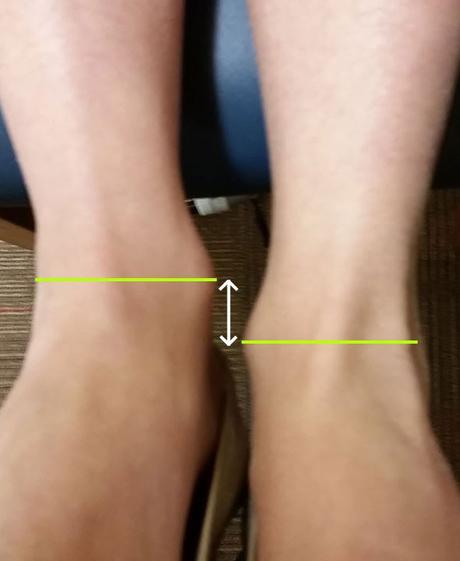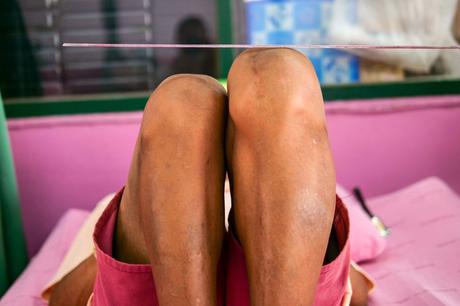Short leg syndrome (SLS) is commonly known as leg length discrepancy in the medical community. Simply put, a person suffering from short legs has one leg shorter than the other. The difference in length doesn’t have to be huge to make a difference in your body, although a leg length difference of up to 1.5 cm (0.6 in) is usually well tolerated and normal until middle age.
In the rest of this article, we discuss the causes of short legs and their treatment methods.
What Is the Cause of Short Leg?
Shortness of the legs can be caused by the difference in the lengths and sizes of the bones from birth or due to an acquired defect between the legs, in which case there is no problem in terms of the structure of the legs. The following can be the causes of leg length differences in people:
- Congenital scoliosis
- Hip joint problems
- bone cancer
- The flatness of the soles of one of the feet
- Bone infections
- Fracture of the growth plate or other bones
- psoas spasticity (stiffness of the psoas muscle)
- Ankle, knee, or hip joint injury in sports or running
- Arthritis of the back, hip, knee or ankle, and other joints

How Much Does Difference in Length in the Legs Affect the Health of the Body?
A slight difference in the legs is average and exists in many people. This difference in the length of the legs is imperceptible and does not lead to pain or discomfort in people, which can be ignored. This amount of difference that can be ignored is almost less than 5 mm. If the length of the legs is more than 5 mm, it is considered short and may cause pain and damage in the legs and other parts. Suppose you find during the examination that the difference in the length of your legs is more than 5 mm. In that case, it is necessary to treat it and to prevent this distance from increasing, use the appropriate methods of treating the difference in the length of the legs.
What Is Clubfoot and How to Treat it? Lordosis (Swayback), Its Symptoms and TreatmentClassification of Types of Short Leg
There are two different classifications for short legs: anatomical and functional
Anatomic Short Leg
Anatomical shortness is diagnosed when one foot is longer and can be corrected by elevating the heel with a medical insole for short feet created after a foot scan. The anatomical short legs are structurally short due to hip joint dysfunction, less knee joint space, or fracture history. Structural or anatomical leg length discrepancy syndrome can occur during childhood due to injury, infection, or differences in growth rates between the legs. Adults can also suffer from leg imbalances from surgery and joint and bone injuries.
Functional Short Leg
The functional short leg is different from the structural short leg. In functional short legs, the patient is often accompanied by back pain on the right or left side of the sacroiliac joint. Often, the right leg is the functionally short leg. A functionally short leg is shortened due to postural or environmental stress, such as tighter muscles on one side of the body or arch collapse.
Short Leg Detection Method
If you suffer from leg length discrepancy, you should consult a doctor, incredibly a specialist trained in musculoskeletal disorders. A thorough physical examination can guide the doctor toward the correct diagnosis. One of the most common findings during the examination is a specific walking pattern often mistaken for a simple limp. Patients with leg length discrepancy will have lameness in one leg that an experienced physician can detect.
Patients with leg length discrepancy who also have scoliosis will have other subtle findings, including asymmetric shoulder height, posterior thoracic prominence, and asymmetric lumbar contours. Most of the time, these patients are unaware of their short legs and the curvature of the spine. Patients with scoliosis will have a pelvic tilt that results in one hip joint being longer than the other.
In patients with advanced arthritis, the narrowing of the joint space leads to the shortening of one leg. A full-length standing x-ray called a Scenogram might be used to measure leg length discrepancy accurately. A complete X-ray of the spine is necessary to measure the curvature of the spine and definitively diagnose short legs.

Treatment of Leg Length Difference (Short Leg)
In the treatment of leg length difference, cases should be considered that the treatment process and its quality are very effective. The following are among the points that should be considered for treating leg length discrepancies. According to these cases, the treatment may be different for each person.
- Age of the patient
- Cause of short legs
- The size of the difference in the length of the two legs
Treatment of Short Leg with Medical Insoles
One of the methods of treating and resolving the difference in leg length is using medical insoles. This difference can be compensated by using a medical insole on the side where the leg is shorter. To use these insoles, orthopedic technical experts will examine your feet, and then a customized insole will be made for you by scanning your feet. When you use insoles, and by using them, the difference in the length of the legs is compensated. You should not expect that short legs problems will be solved immediately after use. Still, treating short legs with medical insoles with continuous use takes place and requires patience to solve this problem well.
Treatment of Short Legs with Physiotherapy
Physiotherapy is one of the best treatment methods for treating leg length differences. Physiotherapy includes stretching movements in the lower area, performed by physiotherapy experts. The treatment of short legs with physiotherapy is different for each person depending on the type and size of the leg length difference.
Exercise to Treat Short Legs
Exercise can play a significant role in treating leg length discrepancy. Some stretching exercises can stretch and strengthen the leg muscles. By doing and repeating these exercises, you can help improve the leg length difference and treat this problem with patience and continuous exercises. These exercises usually include stretching movements that stretch and strengthen the muscles of the legs, which are also effective in treating pain caused by short legs in the pelvis or knees.
Chiropractic
Chiropractic care is a non-invasive, hands-on, and systematic healthcare profession in physical therapy that focuses on your spine, muscles, joints, and nervous system. One of the most common treatments that a chiropractor uses is the manipulation of the vertebrae of the spine or other joints, which is called an “adjustment.” To perform an adjustment, your chiropractor uses his hands to apply controlled force to your joint and guide it through its range of motion. This restores your joint’s normal range of motion and improves its function. This method is also one of the ways to treat the difference in the length of the legs. If a specialist does it.
Pandiculation
Pandiculation is generally defined as stretching oneself and yawning, especially when waking up. However, our automatic Pendicular response is far more important than making us stretch and yawn. Pandiculation is our nervous system’s natural way of waking up the sensorimotor system and preparing us for movement.
Humans and all vertebrates panic automatically when they wake up or have been sedentary for a while. If you’ve ever seen a dog or cat arch its back when it wakes up or seen a baby stretch its arms and legs when it wakes up, you’ve witnessed the particular response. Pandiculation is our innate response to the feeling of immobility and tension in our muscles. Voluntary pandiculation can be effective in treating bone disorders such as leg length difference because the stretching of the legs solves the problem of short legs and strengthens their muscles.
Treatment of Short Legs with Surgery
Surgery is the last method to treat short legs. If a person’s leg length discrepancy is too significant to be treated with non-surgical methods, surgery is the only option left for treatment. Hip and hip replacement surgery is one of the operations performed to treat short legs. In surgeries to treat shortness of the leg, the longer leg is shortened, or the shorter leg is lifted. These operations are considered complex and should be considered the last treatment method.

